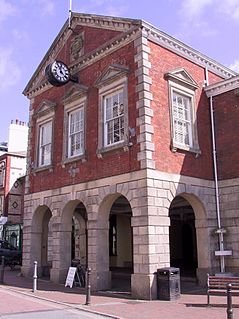
Great Torrington is a small market town in the north of Devon, England. Parts of it are sited on high ground with steep drops down to the River Torridge below, with the lower-lying parts of the town prone to occasional flooding. Torrington is in the centre of Tarka Country, a landscape captured by Henry Williamson in his novel Tarka the Otter in 1927. Great Torrington has one of the most active volunteering communities in the United Kingdom.

Barnstaple is a river-port town in North Devon, England, at the lowest crossing point of the River Taw flowing into the Bristol Channel. From the 14th century, it was licensed to export wool. Great wealth ensued. Later it imported Irish wool, but its harbour silted up and other industries developed, such as shipbuilding, foundries and sawmills. A Victorian market building survives, with a high glass and timber roof on iron columns. The parish had a population of 24,033 at the 2011 census, and the built-up area of 32,411 in 2018. The town area with nearby settlements such as Bishop's Tawton, Fremington and Landkey, had a 2020 population of 46,619.

Tavistock is an ancient stannary and market town within West Devon, England. It is situated on the River Tavy from which its name derives. At the 2011 census the three electoral wards had a population of 13,028. It traces its recorded history back to at least 961 when Tavistock Abbey, whose ruins lie in the centre of the town, was founded. Its most famous son is Sir Francis Drake.

Leeds Kirkgate Market is a market in Leeds, West Yorkshire, England located on Vicar Lane. It is the largest covered market in Europe. There are currently 800 stalls which attract over 100,000 visitors a week

Leeds Cathedral, formally the Cathedral Church of St Anne, commonly known as Saint Anne's Cathedral, is the Cathedral of the Roman Catholic Diocese of Leeds, and is the seat of the Roman Catholic Bishop of Leeds. It is in the city of Leeds, West Yorkshire, United Kingdom. The city of Leeds does not have a Church of England cathedral, because though it is in the Anglican Diocese of Leeds, that diocese's cathedrals are in Ripon, Wakefield and Bradford.

First State Heritage Park is Delaware's first urban "park without boundaries" linking historic and cultural sites in Dover, Delaware, the city that has been the seat of state government since 1777. It is a partnership of state and city agencies under the leadership of Delaware State Parks. It is located in Dover, Kent County, Delaware in the United States. Delaware was the first state to ratify the United States Constitution. The sites of the park highlight Delaware's role as the "First State." First State Heritage Park is open year-round, with special tours of the sites given the first Saturday of each month.

The Fremantle Markets is a public market located on the corner of South Terrace and Henderson Street, Fremantle, Western Australia.
The Manzana de la Rivera is an antique city block transformed into a museum-library-theater-café complex located in Asunción. It has become a cultural symbol of Paraguay.
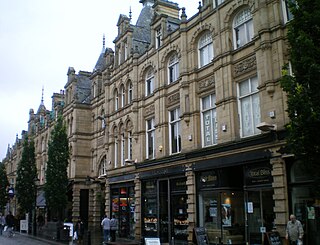
Borough Market is a Victorian covered market in Halifax, West Yorkshire, England. The market occupies a town centre site between Southgate, Albion Street and Market Street. The glass and wrought iron covered marketplace, surrounded by stone built shops and accommodation, was built between 1891 and 1896 and opened by the future King George V and Queen Mary. The design included three public houses on the Market Street side and fishmongers' shops on Albion Street with the remaining exterior shops all being butchers' shops. The award-winning market is open six days a week with some 125 market stalls.

Norwich Market is an outdoor market consisting of around 200 stalls in central Norwich, England. Founded in the latter part of the 11th century to supply Norman merchants and settlers moving to the area following the Norman conquest of England, it replaced an earlier market a short distance away. It has been in operation on the present site for over 900 years.

Todmorden Markets consist of an indoor market held in the Public Market Hall and an outdoor open air market held to the front of the Public Market Hall in central Todmorden adjacent to the Town Hall. The indoor market has over 40 market traders stalls selling fresh produce, meat, dairy produce, bread, ironmongery, books, clothing, carpets and speciality and ethnic foods. Official opening times of the Public Market Hall are Monday to Saturday 9.00am to 5.30pm
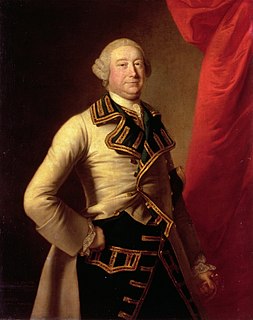
John Rolle Walter was Tory MP for Exeter in 1754–1776 and for Devon in 1776–1779. He held the honorary position of Town Recorder of Great Torrington in 1739–1779, due to his family's long-standing importance as the major local landowner.
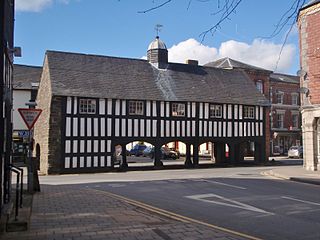
The Old Market Hall is the oldest timber-framed market hall in Llanidloes, Wales, dating to the early 17th century. Until well into the 20th century a weekly market was held on the open cobbled ground floor. Over the years the large and well-lit upper floor room has been used as a wool and flannel market, law court, preachers' hall, flannel store, working men's institute and museum.

The Church of St Michael and All Angels is a Church of England parish church in Great Torrington, Devon. It has been a Grade II* listed building since 1951.
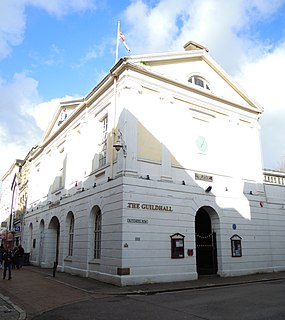
The Guildhall in Barnstaple in Devon in the United Kingdom is the Guildhall for the town and was completed in 1828, replacing an earlier Guildhall. Beneath and behind the Guildhall is the Pannier Market; completed in 1855, the building has been a Grade II* listed building since 19 January 1951.

The Pannier Market in Bideford in North Devon is a large covered Victorian pannier market together with the Butcher's Row of small artisan stalls running along the lower level of the Market. There has been a market on the site since 1675. Since 1989 it has been a Grade II listed building on the register of Historic England.

South Molton Pannier Market is the Pannier Market for the town of South Molton in Devon, England located behind the town's Grade I listed Guildhall which was constructed between 1739 and 1741.

The Guildhall on Broad Street in South Molton in Devon was built between 1739 and 1743 and has been a Grade I listed building on the Register of Historic England since 1951. Today the building is the town hall for South Molton. Beside it, beneath the Old Assembly Room, is the entrance to the Pannier Market for the town.



















